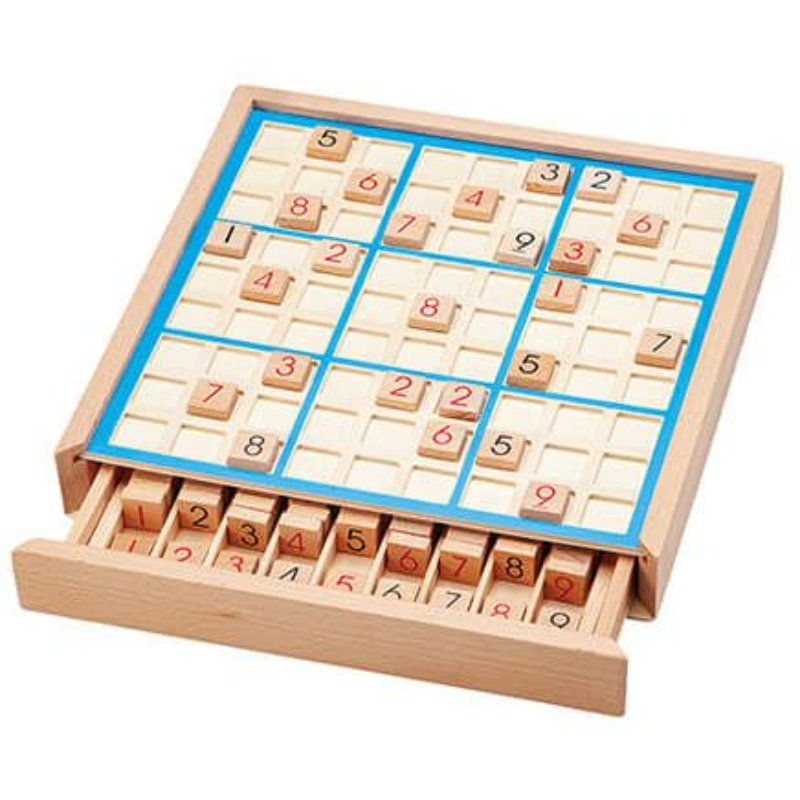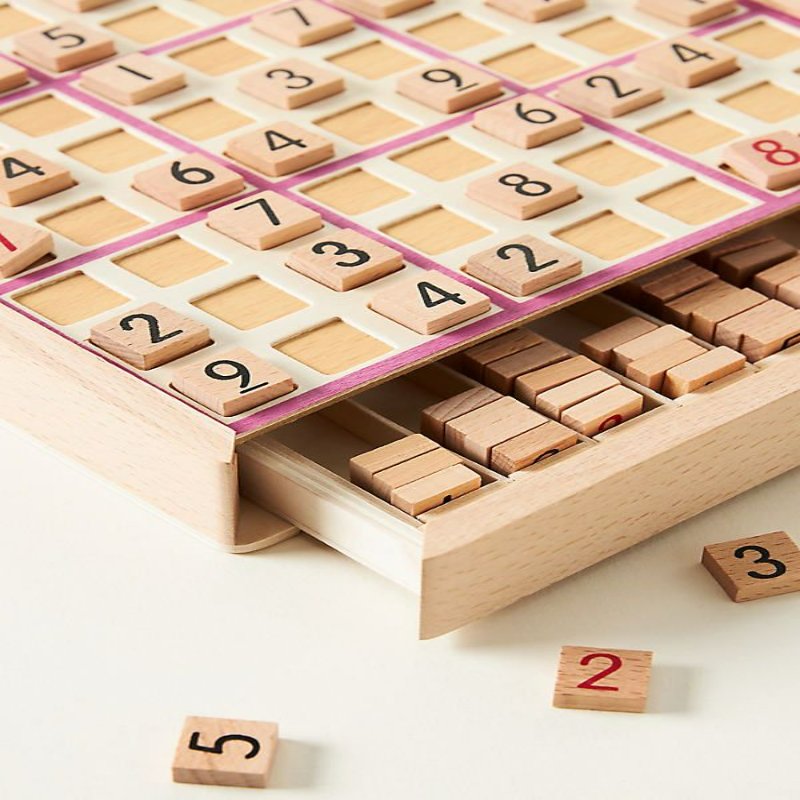Sudoku, a puzzle that has charmed millions across the globe, is not just a game; it’s a mental exercise that sharpens your logical reasoning and critical thinking skills. Despite its simple appearance, the game can be both enchanting and frustrating. If you’re a Sudoku for dummies beginner, it might seem intimidating, but fear not! In this extensive resource collection, we’ll guide you through everything you need to know about Sudoku—from basic rules and strategies to advanced techniques and resources that will elevate your gameplay.
What is Sudoku?
At its core, Sudoku is a logic-based number puzzle. The objective is to fill a 9×9 grid with digits so that each column, each row, and each of the nine 3×3 subgrids contains all the digits from 1 to 9 without repetition. While the standard format involves a grid of 9 rows and 9 columns, variants of the game exist in different sizes, such as 4×4, 16×16, and even 25×25 grids, all challenging players in unique ways.
It is essential to start with the basics. In the most popular version, you will encounter a partially filled grid. It’s this grid that offers a blend of challenge and fun, pushing players to use logic and deduction rather than guesswork. Understanding the layout and rules is crucial for beginners; thus, engaging with resources that simplify these aspects can help.

Basic Rules of Sudoku
Just like any other game, Sudoku has its own set of rules. Here’s a breakdown:
Fill the Grid: You must fill the 9×9 grid with numbers from 1 to 9.
Row Constraint: Each number can appear only once in each row. For instance, if ‘5’ is already placed in the first row, you cannot place another ‘5’ in that same row.
Column Constraint: The same rule applies to columns, ensuring that the same number does not repeat vertically.
Subgrid Constraint: The 9×9 grid is divided into nine 3×3 subgrids. Each subgrid must also contain all the numbers from 1 to 9 without repetition.
The Importance of Logical Thinking
One of the most exciting aspects of Sudoku for dummies is that it is based entirely on logic. Unlike many other puzzles, where guesses may occasionally lead to solutions, Sudoku requires you to make educated deductions based on the information presented. This is a game of elimination, pattern recognition, and foresight. Each correctly placed number can lead you to other numbers, making it a fascinating process. For newcomers, grasping the logic is vital, and consulting solid resources on simple techniques can help cultivate your understanding.
Essential Sudoku Strategies for Beginners
-
Start with Playing the Easy Puzzles
When you’re just diving into the world of Sudoku, it is vital to start with easier puzzles. Beginner-friendly puzzles often provide a more substantial number of filled-in cells, offering you a better starting point. This initial exposure will help you learn the ropes without becoming overwhelmed. As you become more comfortable with the mechanics, you’ll build confidence and be better prepared for medium or hard levels.
-
Employ the Process of Elimination
The cornerstone of Sudoku is elimination. As you fill in numbers, take note of the impossible values for the empty cells. For instance, if the number ‘3’ already exists in the same row, column, or subgrid, you can eliminate ‘3’ as a possibility for those spaces. This powerful strategy requires attention to detail but will become instinctive with practice. The more you engage with the process of elimination, the quicker you’ll spot your next moves.

-
Identify Naked Singles and Hidden Singles
Naked Singles occur when only one possible number can fit into a cell considering the existing numbers in its row, column, and subgrid. A Hidden Single is when a number can only go into one position within a row, column, or subgrid despite other numbers potentially being in the same row. Mastering these concepts can significantly speed up your puzzle-solving abilities.
-
Use Pencil Marks
One of the best tools a Sudoku player can use is pencil marking. This involves noting down all possible numbers for a particular cell in a smaller format, which can later be crossed out as other cells are filled in. Utilizing pencil marks helps to manage information effectively and reduces the cognitive load of remembering which numbers can go where. This technique allows for a clearer visual of your options, which can be especially useful in complex puzzles.
Intermediate Techniques to Boost Your Sudoku Skills
-
Look for Pairs and Triples
As your skills improve, you’ll start noticing structures within the grid. Pairs occur when two cells in the same row, column, or subgrid contain the same pair of possible numbers; therefore, those numbers can be eliminated from other places in that unit. Triples follow the same logic but involve three numbers. Recognizing these patterns can lead to more significant breakthroughs in tougher puzzles.
-
Utilize X-Wing and Swordfish Techniques
The X-Wing strategy involves four cells that form a rectangle, where the same number appears in two rows and two columns. This pattern allows you to eliminate that number from other cells in the corresponding rows and columns. Swordfish is a more advanced concept, expanding the logic of X-Wing with three rows and three columns. While these techniques may seem complex initially, they can substantially increase your success rate in harder puzzles.
-
Practice Regularly
To become proficient at Sudoku, consistency is key. Engage with puzzles of varying difficulty levels. Websites and apps offer vast databases, allowing you to practice anywhere, anytime. Regular practice will reinforce your skills, improve your speed, and enhance your ability to notice patterns and apply complex strategies. Consider maintaining a Sudoku journal to document your progress, note observations, and jot down techniques that work best for you.

Advanced Techniques for Sudoku for dummies Expert Solvers
For those seeking challenges that push the boundaries of their Sudoku skills, mastering advanced techniques can be incredibly rewarding:
XY-Wing: This technique allows you to eliminate potential candidates from other cells based on a specific pattern and can lead to breakthroughs in otherwise unsolvable situations.
Multi-coloring: This advanced technique involves coloring the cells with the same candidate number and can help reveal contradictions that allow for eliminations.
Fishy Cycle: This complex technique utilizes chains of cells and can demonstrate how to eliminate digits even when they appear to be possible candidates.
Each of these techniques demands a high level of understanding and practice. Engaging in forums or communities dedicated to Sudoku can provide an excellent opportunity for learning and discussing these methods with other enthusiasts.
Utilizing Sudoku Resources Effectively
“Sudoku for Dummies” by Andrew McMeel Publishing: A guide that introduces readers to various approaches to mastering Sudoku, offering helpful tips, strategies, and a plethora of puzzles at different skill levels.
“The Sudoku Puzzle Book for Kids” by Ken Ken: An excellent option for younger solvers or those new to Sudoku, incorporating fun elements that also teach critical thinking.
Online Resources and Apps: Websites such as Sudoku.com and various apps available on smartphones offer interactive tutorials, endless puzzles, and an active community for discussion.
Join Sudoku Communities
Engaging with online communities, such as Reddit’s r/sudoku, can be beneficial. These forums provide a platform for discussion, sharing strategies, and collaborating on particularly challenging puzzles. Building a network allows you to exchange ideas, seek help when you’re stuck, and discover new resources and techniques that can improve your Sudoku skills.
Conclusion
Sudoku is more than just a pastime; it’s a gateway to mental agility and logical reasoning. From the early stages of Sudoku for dummies learning to advanced strategies that require intricate thinking, each level offers new rewards and challenges. With the information and resources gathered in this blog, you’ll be well-equipped to embark on or continue your Sudoku journey. Remember, the key to mastering this rewarding puzzle game lies in practice, persistence, and the continual exploration of new techniques.
Whether you’re solving a quick puzzle during your morning coffee or diligently focusing on a more complex challenge, the satisfaction that comes from finding the solution is unparalleled. So gather your pencils, open up your favorite Sudoku app, and dive into the world of numbers, patterns, and fun that awaits!


